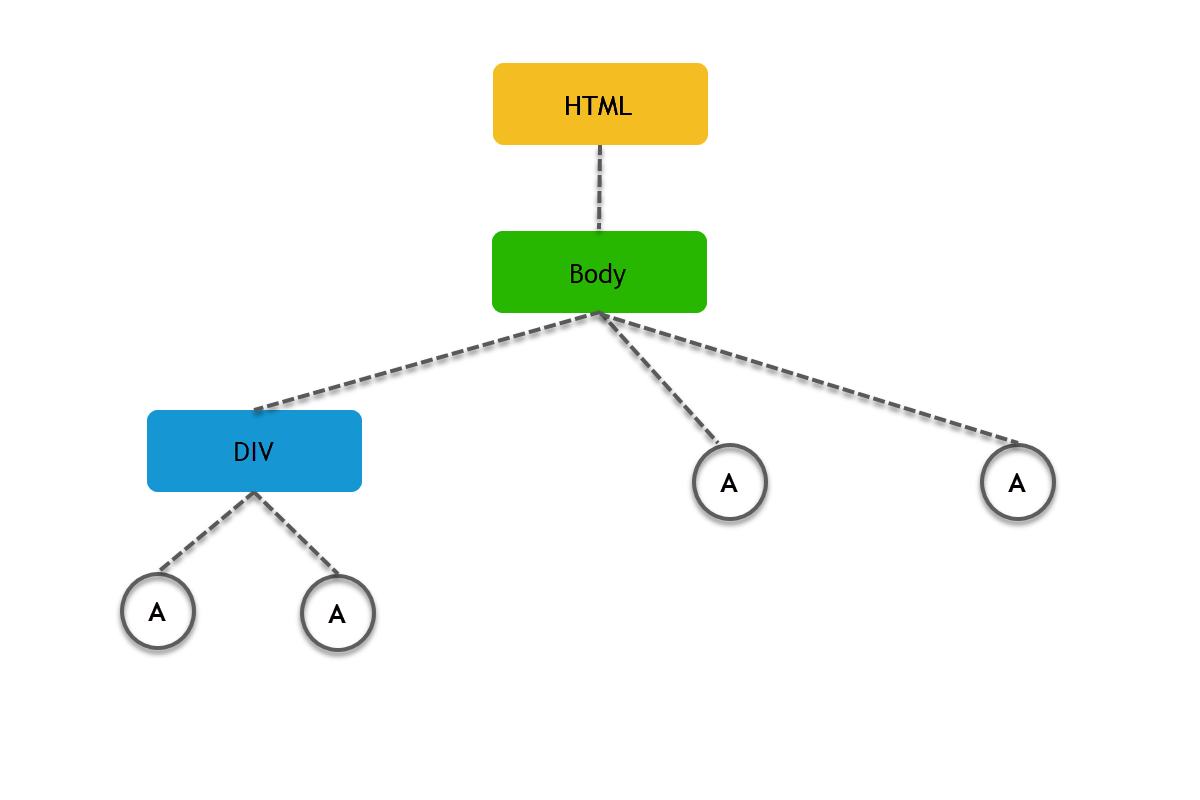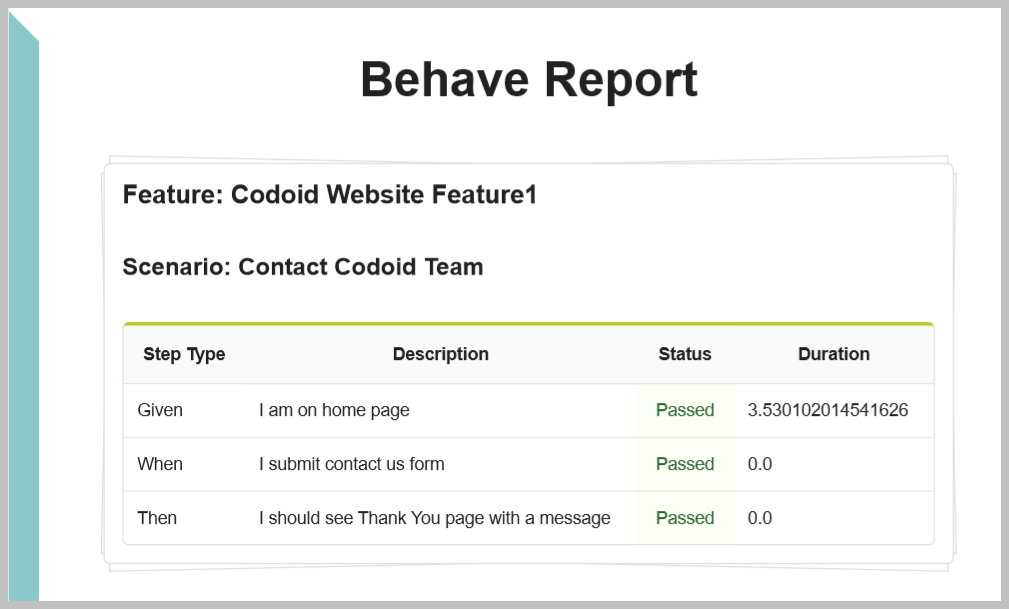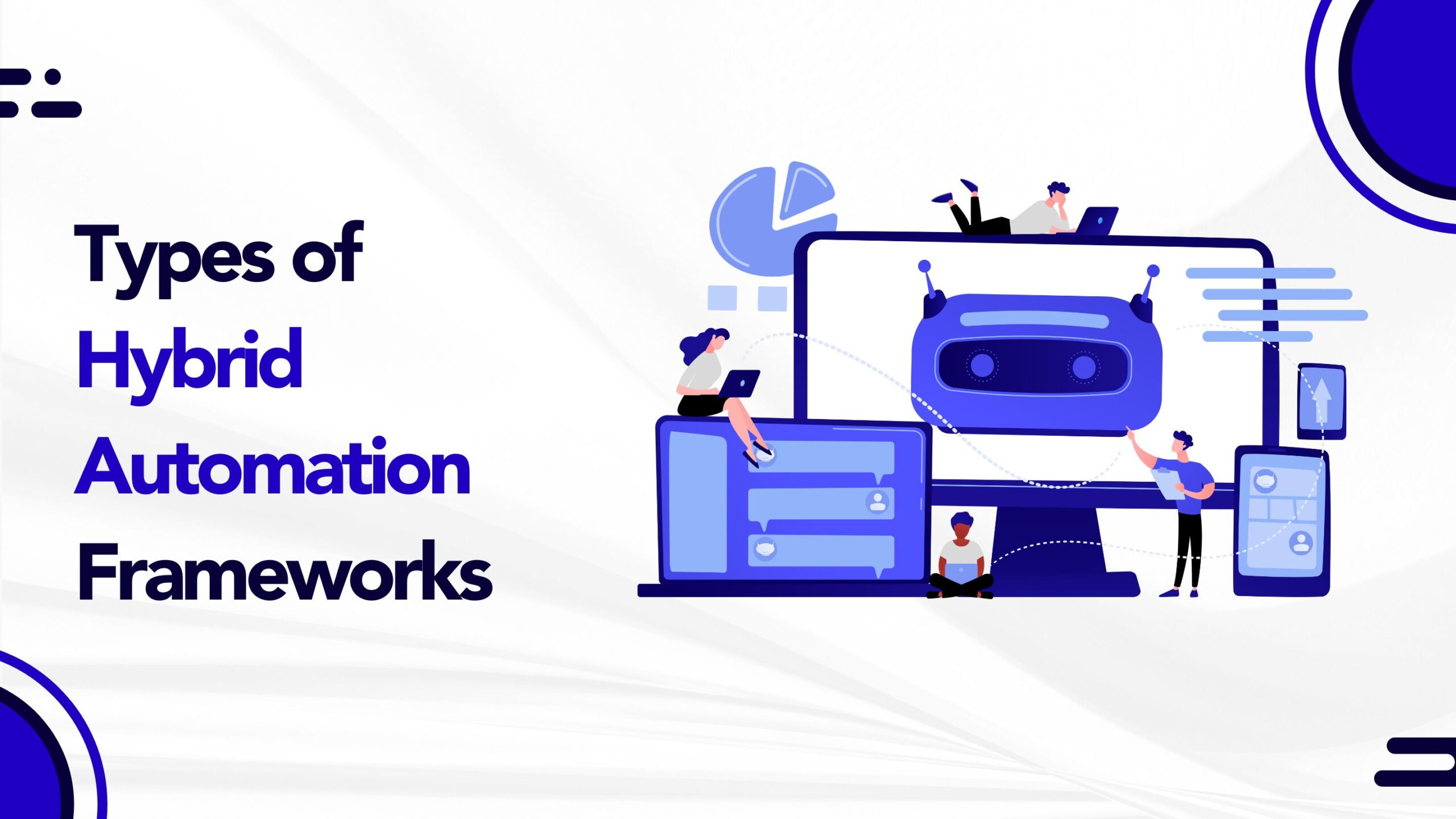
by admin | Jun 17, 2020 | Automation Testing, Fixed, Blog |
XPath vs CSS Selectors is a captivating subject for any automation test engineer. Sometimes, teams try to convert their locators from XPath to CSS Selectors with the objective of achieving better improvement in script execution. We, at Codoid, focus on robust automated test script development to avoid false positives and negatives. Object locating performance is our next priority. If you have technical know-how of CSS Selector & XPath work, then you can write concrete object locators within a short span of time by revisiting locators thereby improving your scripts performance.
Let’s say for instance if all the XPath locators have been converted to CSS Selectors. You might have a false perception that you have accomplished something and your scripts will run fast now, which is not the case in real time. If you are not familiar in writing CSS Selector effectively, then your CSS locators won’t outperform XPath locators.
How CSS Selector selects an element
You normally write a CSS Selector from left to right. Wherein your browser parses the other way round i.e. from right to left. This is a very vital concept one needs to understand to write robust and performant CSS Selectors with ease. Always provide Class or other important locating information to the right most CSS Selector clause since your browser starts evaluating the CSS Selector from right to left. Try not to provide only tag name to right most selector clause. In case if you have provided only anchor tag to the right most clause. The parser evaluates all the anchor tags in HTML DOM to narrow down the particular anchor tag from the parent information. That’s why we insist you to provide more information to the right most clause.
Let’s say you want to locate two anchor tags which is inside the DIV tag in the below diagram. You can write the following CSS Selector – div a As we mentioned before, browser needs more information for the right most clause to identify the object quickly. As per div a CSS selector, it will parse all the anchor tags and subsequently locates the two anchor tags based on the parent information. If you provide more information for anchor tag clause, then your CSS Selector will identity the objects quickly.

How XPath works
XPath locates an element from left to right. That’s why we see some performance latency. However, XPath can traverse between descendant to ancestor and vice versa. XPath is powerful locator to identify dynamic objects. For example: if you want to identify parent nodes based child node information, then XPath will be the right choice.
In Conclusion
We, as an automation testing company, follow test automation best practices to create robust automated test suites. Whether it is XPath or CSS Selector, we recommend you write it effectively and eventually focus on how to avoid false positives & negatives than spending time in improving object locating performance at micro level.

by admin | Mar 13, 2020 | Automation Testing, Fixed, Blog |
As we all know that the importance of automation in the IT industry revolution is in pinnacle. If we just hold breathe and ask ourselves a question as to why? Due to its high accuracy of executing the redundant things, reporting results and it needs no or less human intervention hence the cost that a company spends on a resource is relatively reduced in a long run.
Whilst it’s true that the automation is so much beneficial in terms of bringing accuracy in and cost savings to the company, it is also true that if at all the planning and implementation is not taken utmost care it equally gives the negative results
So, in this blog, we are going to talk about the automation best practices.
Understand the application technology then identify the tool
Before we kick start with automation, there has to be a lot of groundwork to be done from the application perspective. Thorough understanding of Application development infrastructure like
What technologies are being used to develop
It’s front end
Business logic
Backend
This will help us identify the tool that best fit for the application which in turn helpful for hassle-free test automation implementation.
Eg:- if at all the application front end is developed with angular js then protractor is preferred to selenium because it’s not possible for selenium to deal with some of the locators.
Determine the type of automation tests. We need to identify what types of testing to be performed on the application then do a feasibility study to proceed with automation. When we say types of test we are dealing with two things
Levels of testing
This is a conventional test approach in almost all the projects, that first unit testing then integration testing followed by system testing. In this testing pyramid as we reach from the top to the base we intensify the test process to make sure there are no leaks, in the same fashion we need to ensure that each level of these tests are automated as well.
Unit tests
This is anyways done by the development team, these tests are automated most likely in the process of building and deployment process. Automated unit tests can give us some confidence that all components are running properly and can further be tested.
Integration tests
It’s well known that Integration tests are performed after unit tests. In the recent agile model in order to conduct parallel testing alongside development activities, we need to consider automating the integration tests as well
These tests come under the classification API and involve verifying the communication between specified microservices or controllers. UI might not have been implemented by the team we perform this.
System testing
System tests are designed when the system is available, in this level we deal with writing more number of UI tests which would deal with the core functionalities of the application. It adds great value when we consider these tests for automation
Types of tests that can be automated
UI layer tests
User interfaces the most important piece of the application because that’s what exposed to the customer, more often than not business focuses on automating the UI tests. Alongside doing in sprint automation leveraging the regression test suit gives a great benefit.
API layer tests
We should be relying on UI tests alone, given their time-consuming factor. API tests are par quicker than UI tests, automating tests in this layer will help us confirm the application stability without UI. This way we can conduct some early testing on the application to understand any major bugs earlier.
Database tests
Database test automation adds a great value to the team when there is a need to test new schema or during data migration or to test any quartz job that runs in the DB table.
Conduct feasibility study diligently to deem the ROI
While bringing automation into the testing process is essential, it is also very much needed to do an analysis to understand the return on investment factor. Jumping on to automate everything is not a good approach. A proper understanding of the application then taking a decision on the tool and framework selection is recommended.
Failing to conduct feasibility study will lead to problems like weak scripts with flakiness, more maintenance effort.
Points to Consider as a best practice for Automation
Choose the best framework
Choosing a suitable framework is part of a feasibility study. Based on the agreed test approach such as TDD- test-driven development or BDD- behavior-driven development, framework selection, and implementation should be taken into consideration
It’s recommended to go with the BDD framework approach considering the current agile methodologies. As the spec file which can be understood by any non-technical professional drives the test case, its quite easy to follow and define the scope of any test case in the application.
Separate tests and application pages code
In test automation while designing the tests, it’s essential to write test cases and the application pages method. This kind of page factory implementation helps us to get rid of unnecessary maintenance. It’s expected that the application screens likely be changing over cycles if at all the tests are not separated from pages we need to edit all the test cases even for a single change.
Showcase meaningful reports
The main purpose of test execution is to observe the results, be it manual testing or automated testing. Given the context, we need to integrate a reporting mechanism that should clearly state each test step with the corresponding results. When we share the reports to any business stakeholders they should find these meaningful and seem to capture all the correct information.
We have many third party reports being integrated to our test suites such as extent reports, allure reports, and testing reports. The choice of reporting tool should be based on the framework implementation. Dashboards should be very clear. Again BDD frameworks such as cucumber, the gauge would produce better Html reports and these are inbuilt.
Follow distinguishable naming convention for test cases
Not naming the tests properly is the silly mistake we ever do and its costlier. A good name given to the test case itself will speak for the functionality it checks for. This will also make the reports appear better as we are going to showcase the test case name and test case description in the report, it will also help the stakeholders to decipher the reports. Alongside naming the tests a meaningful name, it would be of great help if we can agree to a similar pattern for all test cases in test suit.
Follow the best coding standards as recommended
Despite the programming language when we are scripting the test cases it’s highly important to use the right methods and data structures. It’s not just recommended to find the solution but also to think of the best approach that reduces the execution time. Peer review and review by a senior or team leader in the team before it has been pushed to VCS system.
Here are some best practices when we say coding standards
Use try- catch blocks
Whenever we are writing any generic method or any test method we must ensure its being surrounded by try with possible catch blocks and as a good practice we must print a useful, relevant message according to the exception that’s being caught.
Use static variable to set some constant values
In any automation framework we certainly have some variables which we don’t want to change them at all it’s always a best practice to have them declared as static ones. One good example of this is web driver object is made as static variable.
Considering the scope of variables, we must consider declaring them. Global variables are recommended as we can use them in different methods as the test case executes
Generate random data and append to testdata
In recent times applications have become more advanced when it comes to the point of dealing with the data. In a data-driven test when we are fetching the data from an excel workbook, since the same test data is going to be used upon multiple runs, during the second run if at all application doesn’t accept the duplicate data, we need to supply another set of data. Instead, if we can just append a random number or an alphabet by using the java Random class, it serves the purpose.
Write generic methods
While designing the test automation framework and designing the tests, it’s very important to understand the common functionalities and write them as generic methods. Anyone in the team who is developing a new script needs to make use of these methods as much as possible and any new method that doesn’t exist can be added with the discretion of senior automation developer or team lead. Failing to implement this process will add so much of maintenance to the test code which is tedious.
Relevant comments to the code
Comments are much needed to any code snippet to help with understanding. It need not be a comment good documentation such as,
What exception is being thrown by the method upon failure?
What parameters it takes?
What it returns back?
Documenting the above things would give crystal clear understanding to any newbie who joins the team and there won’t be any hassles to kick start with script development
Using of properties files/ xml files in the code base
Instead of hard coding or supplying a few of the parameters required for a test such as a browser info, driver exe path, environment URLs, database connection related passwords, hostnames it would be good practice to have them mentioned in a properties file or any XML file, the one advantage is that, these files need not be built every time we trigger the execution. It makes the process a lightweight one also it is easy for maintenance.
Use of proper wait handling
On many occasions we see some of our tests will exhibit flakiness, its highly uncertain to find them why are they failing. If we ever conduct a proper triage we might end up answering ourselves that it has to do with waits. It’s better to go with implicit wait and wherever it’s required we can go with explicit wait so that we are not adding too much of execution time to the script. Unless there is a specific requirement it’s not recommended to use Thread.sleep
VCS system availability
When we as a team automating the application, it must have a version controlling system in place, so that we can manage the code changes and merge without any conflicts or re-works if all goes good under proper guidance. Having a VCS system is ideally recommended for any project that has automation test service.
Bring CI/CD flavor to test automation
DevsecOps is the buzzing thing in the industry in this era, this not just for developers to build the code and deploy but also for testing to automate the execution process, having this infrastructure will help set the execution on a timely fashion or with a particular frequency. We can set the goals as to what should be pre-execution goals and post-execution goals. It can also help the team with sending the reports as an email, the only job left is to analyze the results. This is one good thing to execute the regression tests with more frequency to ensure all functionalities work intact.
Capture screenshots upon failure and implement proper logging mechanism
As the test runs we need to capture the screenshots and have them in a specific directory as evidence. We can take a call whether or not screenshots required for all passed steps or only for failed scenarios based on the memory constraints. The screenshot can further be used share with the development team to understand the error when we report that as a bug.
Also a good framework must write log files to a directory, in order to see the steps have been executed. Dumping these into a file would also help future reference.
Best practices are the things learned from experiences, so adopting them would help us developing and maintaining the automation framework easily and that’s how we pave a tussle free path for our daily routines, some part of this discussion can be a debated as well because in automation world we have many flavors of tools, applications and frameworks so probably there could have been different solutions. The best thing to remember here is, basis the need for analyzing and finding a solution then make it as a practice is recommended.
Hope there could have been some takeaways while thanks a ton

by admin | Mar 1, 2020 | Automation Testing, Fixed, Blog |
In this blog we are going to discuss the software test automation lifecycle followed by the feasibility analysis that is required. The feasibility study is a must before taking any action with the automation since it is the deciding factor for automation sign-off based on the value that is going to add to the business.
Life cycle of Software Test Automation
Life Cycle in layman definition is the series of steps/changes that happens in a process to get the desired result.
Life cycle denotes the subsequent actions in a timely fashion. Below are the lists of things to be considered for test automation life cycle.
Feasibility study
Tool identification
Framework identification
Proof of concept
Test scripts design
Test scripts execution
Test scripts review
Feasibility analysis & its significance
As discussed at the start, the feasibility study is something without which we can’t judge the outcome of automation efforts also can’t identify the right automation candidate. This study helps the test team in the forecast on the following activities.
Can the application be automated or not?
What type of tool/ test automation framework can be used?
How much automation is possible?
In spite of high efforts, what’s the value add in automating?
Below are some key parameters while performing the feasibility study, let’s look into each one of them in brief
Feasibility study on the application and understand the functional flow
Before we proceed with automating any application, the automation tester must possess the knowledge of the application. Without having this understanding when any test scenario is considered for automation and we may get into several problems and the task either would be left incomplete or likely delayed.
As an automation tester the focus would be to gain sufficient functional knowledge, get the relevant test cases from the functional (manual) team then conduct feasibility analysis to know how many scenarios can be automated. If at all some cases can’t be automated there must be a valid rationale and the agreement with the stakeholders must be taken.
The analysis helps the test team to showcase their deliverables because after thorough examination team will be in a position to understand what will be covered in automation and how long they require to complete them. Failing to conduct this study could lead to irksome state.
Feasibility study in tool selection
We must conduct a careful study before finalizing the tool. The key points to be considered are
Whether or not the tool can detect all the objects of an application?
The tool that we are going to use for automation must be able to locate all the elements of the application as the locators are the key for the script to interact with the application elements
In case of selenium, we rely on Xpath, CSS selectors, name, Id..etc
If the case is to automate the windows application then selection of a tool that can interact with windows must be chosen
Eg: Coded UI – can locate the windows much better.
Whether or not the tool is best compatible with the application technologies?
There should be a sample POC conducted with all the list of proposed tools to automate the applications then decide which one should be of the good match by considering the application development technologies and its compatibility with the tool.
Eg: while selenium is used to automate all the java, .net, PHP oriented applications, it’s essential to opt for protractor when the application front end is mainly designed with Angular JS. Because angular elements can’t be caught with selenium
Whilst choosing the tool, the cost that would be required for investment should be taken care of. If at all there is a tool exists which does the job w/o any degradation of quality we can fairly go with that as that’s going to add a lot of savings, which will eventually prefer to get better ROI.
Community that’s available for that tool, should be given the importance to an extent as that helps in troubleshooting some of the issues we see in our daily routines.
More the community more preferable the tool is
Feasibility study on framework development
Once the tool choice has come to a conclusion, the next step is to perform the study on framework piece. It should be chosen in a way that the tool supports also it should be quite generic. It should give us better reports to analyze the results
A POC has to be conducted, then after observed the results, we must think of coming up with more reusable components. We might take a lot of hours of time than what is really required for manual validation. But in the long run, as we pass by different phases, the suite adds a lot of value since the execution time will come down to a great level.
A proper check on the regression scripts and baselining them is needed as well because that helps to add more coverage.
Feasibility study on test strategical approach
When it comes to the test approach, the business should take a call whether what between the below strategies should be followed.
Test driven approach
This approach is first to write the tests and then try to accomplish the fix for it. This would be a sophisticated approach and it’s not that easy for non-technical stakeholders to decipher properly. This is completely a call taken by the business based on their budget and other parameters that make sense for a project.
Behavior driven approach
This is buzzing in recent times, as the progress is made by documenting the task in plain English then try to map them with the technical actions. This gives more insight into what a particular test case was written for, what validations are performed. This business model delivers a better report than the above model.
Eg: Cucumber, Specflow, Gauge..etc
Feasibility study on infrastructure availability
In order to proceed with hassle-free automation the test team must not have any issues at infra level, the possible issues that might fall under this category are
Not having access to create project/ branch in a chosen configuration management tool
Not having access to the application/ DB servers to work independently
Software license procurement by the business
Network availability and kind of access to Application, which will delay the execution and cause failures at times
Not holding admin rights to perform certain tasks
The above-listed problems will prohibit automation activities from point to point. Test team must raise the access requests to all the needed things in the project and gain access.
Stable environment and a major part of development should be completed
As a test team we should know when to automate a particular application. If the build quality is at an infancy stage, we see the basic smoke tests are failing then there is no point in automating the test cases at that stage.
When we go for automation when the major development is in progress, we end up adding a lot of maintenance to the test suite as the UI locator elements might get changed often or at times there are some changes expected at functional level, then we may need to re-write the scripts as per new design which is tedious.
Assessing how much automation can be achieved
100% automation is fallacy! Given the complexities of whether or not they are technical or no-technical, that may occur during automation development.
As an automation tester doing this exercise helps the business understand the index of cost and effort saving. Ideally, this is achieved by comparing the functional test cases with the automation test cases. This metric defines what percentage of the tests has been automated and accordingly, the savings were understood.
Calculating the ROI metrics
Metrics are key numbers, which will denote the status, progress, outcome in various ways. As a test engineer/ development engineer when we bother about the accomplishment of tasks, but the management always looks at the numbers extracted as metrics. This is one short and explainable way of presenting data to understand where we are? What have we achieved?
In the same way, in automation world we have certain metrics to be calculated to project the savings to the business, following are a couple of quick examples
Automation savings
This is to understand how much time in man-hours and effort saved because of bringing in automation
Savings = Manual test efforts – Automation test efforts
Return on investments
Certainly we are investing during automation in the means of script development, managing talents and the cost of procuring the infrastructure that’s needed.
Cost of automation investments = Cost of talents + Cost of script development and maintenance + Cost of infrastructure.
Conclusion
More the ROI, the more the profits and that is what business needed as well. In order to achieve better ROI, we should focus on below
Try to bring in more automation
Focus of in-sprint automation development
Right choice of tools, which will incur no or as minimal budget as possible
Develop a generic framework with more reusable components, to avoid extra and often maintenance
Frequently Asked Questions
-
What is Automation Feasibility in Software Testing?
Automation feasibility analysis is the process of determining what test cases should be automated based on factors such as the required tools or frameworks, infrastructural availability, ROI, and so on.
-
Which are the Factors to be considered to justify the Feasibility of Automation?
Major factors to be considered during feasibility analysis are ROI, available infrastructure, test strategy, tool & framework being used, availability of time, repetitive nature & complexity of the test cases, and so on.
-
Why is Automation Feasibility Analysis important?
It is known that 100% Automation is not possible. But in a few cases, not all test cases that can be automated should also be automated due to various factors. So starting automation testing without a feasibility analysis would make the process inefficient.
-
What is an RPA Feasibility study?
An RPA Feasibility study is the process of analyzing the technical feasibility of automating a process after thoroughly examining the step-by-step process right down to the most minute detail
-
Why do Automation Projects Fail?
Most Automation testing projects fail due to a lack of clarity on which test cases have to be automated, usage of wrong tools, lack of automation goals, and the skill to achieve those goals. An automation feasibility study ensures that your team overcomes such issues.

by admin | Apr 16, 2020 | Automation Testing, Fixed, Blog |
Generating Customized Test Automation PDF report is a great value add to your team. Let’s say for instance if you wish to share a high-level automation test report with your business stakeholders. Then emailing the report as a PDF is a simple and viable solution. However, sending predefined report or technical information is insignificant and uninteresting to the business. As a software testing services company, we use different report templates for different audiences. In this blog article, you will learn how to create Customized Automation Testing report using Behave & Python.
PDF Report Package Installation
For Windows users: If you see OSError: dlopen() failed to load a library: cairo / cairo-2, then you need to install GTK+. Refer the following URL for more details – Install GTK+ with the aid of MSYS2
Generating Behave JSON Outputs
In this blog article, we are using behave framework JSON output to create PDF report. To create JSON report from behave, use the below command.
behave -f json -o reports.json
Consuming the JSON Output
Create a python file and paste the below code.
from pdf_reports import pug_to_html, write_report
import json
file = open(r'../reports.json')
json_report = json.load(file)
html = pug_to_html("template.pug", title1="My report", json_report=json_report)
write_report(html, "example.pdf")
Code Explanation
Line #1 & #2 – Package Imports
Line #3 – Opening the json output file which is generated by behave framework.
Line #4 – Loading the json file
Line #5 – Calling pug_to_html method to generate the PDF report.
Note – To generate the report, you need template.pug file. Please refer the pug_to_html method call, you can see template.pug file as one of the arguments.
Template.pug file
Pug is a template engine. The PDF_Reports package uses Pug to generate the PDF output. Let’s see how to create the template file in your project.
1) File Creation – Create & open template.pug file in your project
2) Report title – The below line creates an H1 tag and applies Semantic UI CSS.
h1.ui.header Behave Report
3) Sidebar – Creating sidebar in the report which enhances the look and feel.
#sidebar: p Test Automation Report
4) Iterate features from the json data
each feature in json_report
if feature.keyword =='Feature'
div.ui.piled.segment
h4.ui.header Feature: {{feature.name}}
5) Iterate Scenarios
each scenario in feature.elements
if scenario.type =='scenario'
h5.ui.header Scenario: {{scenario.name}}
6) Iterate Steps
table.ui.olive.table
thead
tr
th Step Type
th Description
th Status
th Duration
each step in scenario.steps
tr
td {{step.keyword}}
td {{step.name}}
if step.result.status == 'passed'
td.positive.center.aligned Passed
else
td.negative.center.aligned Failed
td {{step.result.duration}}
7) Run the python file which is calling pug_to_html method. If the report is generated successfully, you can see the ouput as shown below.

Full Code
h1.ui.header Behave Report
#sidebar: p Test Automation Report
each feature in json_report
if feature.keyword =='Feature'
div.ui.piled.segment
h4.ui.header Feature: {{feature.name}}
each scenario in feature.elements
if scenario.type =='scenario'
h5.ui.header Scenario: {{scenario.name}}
table.ui.olive.table
thead
tr
th Step Type
th Description
th Status
th Duration
each step in scenario.steps
tr
td {{step.keyword}}
td {{step.name}}
if step.result.status == 'passed'
td.positive.center.aligned Passed
else
td.negative.center.aligned Failed
td {{step.result.duration}}
In ConclusionThe above template is ( quite simple / very straightforward,) it does not have implementation to handle BDD Scenario Outline, Tags, and Screenshots. As an automation testing company, we use comprehensive Pug reporting template to generate PDF reports. Once the template is in place, you can create multiple reports for different audiences. For successful test automation, make your reports easily accessible to everyone in the team.

by admin | Mar 26, 2020 | Automation Testing, Fixed, Blog |
In this blog article, we have listed tools and libraries we use for Python Test Automation Services. Few popular tools to automate web and mobile apps are Selenium and Appium.
However, there are few widely used Python Packages which will help you create and manage your automated test scripts effectively.
Let’s see them one by one.
PyCharm-Python IDE
PyCharm is an excellent IDE choice for automation script development. PyCharm comes in Professional and Community editions. We use Community edition since we need it only for automation testing purpose.
Behave BDD Framework
There are many BDD frameworks like (Lettuce, Radish, Freshen, & Behave) which goes hand in hand with Python. We use Behave BDD frameworks for automation testing projects. Behave has all the required features of BDD.
openpyxl
openpyxl is an Excel library to read and write xls & xlsx files. If you want to install and explore openpyxl, please refer the following blog article. How to read & write Excel using Python
Page Object Pattern
When you apply Page Object Pattern, you can enable re-usability and readability. For example: Every test case in your test suite may instruct you to visit login page multiple times. However, when you do this in automation testing, you no need to write Login page steps in multiple test case files. Create a Page Object Class and call the methods whenever you want the login steps. You can write much cleaner test code using Page Object Pattern.
ReportPortal
Creating and maintaining an automation reporting dashboard is never an easy task for a testing team. Writing robust automated tests is a cumbersome task for an automation tester. Creating your own test automation reporting dashboard is an additional effort. We have created many test automation reporting dashboard for our clients. However, nowadays, we have started using ReportPortal instead of reinventing the wheel.
In Conclusion
Python Test Automation is gaining much popularity among automation testers. Follow automation testing best practices, have a right team and use right tools & libraries. This will undoubtedly help you succeed in automation testing.

by admin | Apr 7, 2020 | Automation Testing, Fixed, Blog |
While building any test automation framework and designing scripts at times we might end up having flakiness in scripts if the proper standards and the test data generation are bad. Given the fact that in test automation framework results are vital as they state whether the test passed or failed and ultimately that concludes the stability of the application under test. Holistically result from reports are the ones which help the business stakeholders to understand where we are with respect to the software product launch.
In this blog we are going to talk about the importance of the results and how should we ensure we don’t fake them. False results are capable of creating a big mess in the system and they are quite costly to fix and learn.
Having said about the fake results, let’s understand what we are meaning to say by the word fake.
It can be of something that has a bug in the software system but the test shows it’s passed. By the term of medical science, this can be addressed as false positive, because we have seen a pass result that is not actually true.
On the other hand, there can be a scenario where the functionality in the system could have been in working state, however, the test shows it failed. This behavior being inline with the medical science term called a false negative.
Relation between automation testing and false positive/negative
Glad that we understood a couple of new terms, but it is still a question as to what’s the relationship between them and the automation testing? why only applicable to automation testing?
If we just recall the purpose of automation, it is essential to script the test case and execute it in the future so that the manual effort spent in reduced. So when we are scripting it for future use a high degree of care should be taken and get the things right. The reason for insisting on the promptness and care is we are not going to be visiting the script thoroughly every now and then. If at all due to oversight something wrongly implemented it obviously serves the wrong results and ultimately leads to flakiness it could be either false positive or false negative.
And to answer the question why it doesn’t applicable to functional manual testing, their user applies his sense than some automated process, any wrong input gets corrected during the execution itself hence there is no room for this concept in manual testing.
Importance to look after false positive/negative
As briefed above at a very high level that these false positive and false negative results can cause a great loss in the business as we are purely mistaking the results. It could impact in the following ways.
A false positive can lead to bug leak in the market as it was pursued to be working good at our site, this can greatly impact the reputation and business loss for the company.
A false negative can lead to spending extraneous effort by various people because of the reported problem when it’s not true. The bug has to be initially understood then learn to repeat then spend efforts to triage the same to conclude it. These efforts ultimately affect the deadline of a release.
Reasons for flakiness in scripts and possible solutions
Let’s understand the prime reasons for occurring false positive/ negative
Incorrect test data
Test data is mandatory to input for any test case to execute. We should always generate the test data as per the guidelines set for the fields in the application. Violation of the rules will lead to abrupt script failure this causes the test case to be failing.
The above failure of the false under the category of a false negative, the reason being we were not supposed to see a failure had there been in data issue.
Duplicate test data
In the recent era applications have gained a lot of maturity in order to serve the user better. Certain important fields will not accept the duplicate data, so if we fail to generate the unique data we again hit a false failure this again comes under the category of false negative.
In order to overcome that we should always generate unique data. One possible solution would be to generate random values and append to the actual test data that is being read from the external excel file.
Improper coding standards
While designing the scripts proper coding standards must be followed failing which will lead to the failure of the scripts in the form of a false positive or false negative. Let’s discuss a few key points in coding standards as what we really mean by and what its contribution in leading to failure is.
Wait handling events
When we are especially automating the GUI we expect some delay for a page to load and the elements to generate and attach to DOM. We also have a parameter of the network, considering all these things we should lay out a plan to handle the weight properly. We should also keep in mind that due to the inclusion of waits the order of n of a script should not go too high. We should be very careful enough to select the appropriate wait, to see below there are 3 waits that we can use as per need
Implicit wait
Explicit wait
Fluent wait
Java wait- thread.sleep(1000)
Initiating and closing browser connections
As we know that the test runs in browser hence invoking and quitting the browser is the most common action that we interact with. The opening and closing actions should be managed correctly by the testNG annotation so that we have a new instance created after each test after each execution as desired. The recommendation would be to launch a new instance after every test so that the impact of one test will not be there on the subsequent test.
Also we should ensure that if at all any browser is running in the port even after completion of test we must close those connections before we re-launch the new browser instance for a subsequent test. It is recommended to use driver.quit() to help withclosing all connections as driver.close() only closes the current browser. This way we can avoid any flakiness that browser can contribute.
Not handling the exceptions
Exception handling brings a lot of sense to the code, it helps application from not to terminate abruptly on failure cases. This is being achieved by surrounding the code snippet with try and catch blocks with necessary exceptions hierarchy.
What basically happens is that, if at all we don’t have a mechanism of catching the anticipated exceptions in the corresponding code block when we face that exception, unfortunately, test case interrupts abruptly and no report would capture that failure as we don’t have that execution caught also any finally block to execute certain mandatory information. In this case, we will get a report with the actual result status of the previous test steps (be it pass/ fail) and report generation stops and it flushes. Ultimately the report doesn’t have the proper results printed in it, its creating false positive or negative in this case.
The prominent solution would be to use the try-catch blocks properly with necessary test step information printed so that everyone can understand that the test actually failed.
Not printing the test step description and status in the report
Report is one of the best evidence to check whether a particular test failed or passed. As it’s a bible it’s essential to capture the right information. We should be very diligent while writing the report and capturing the test step information. A small wording mistake can change the meaning of the result and it creates ambiguity.
Conclusion
Since automated tests are executed by a system and given the fact that it has no intelligence thus far rather than performing the assigned task, it’s our responsibility to get the things right on the very first time, so that the verification and analysis would not take much longer to understand while publishing the results. A small mistake can even be costlier based on the priority so nothing can be misjudged or misunderstood.
Hope the information gave some insights on the topic, thanks for reading through.
Happy learning!!!




























